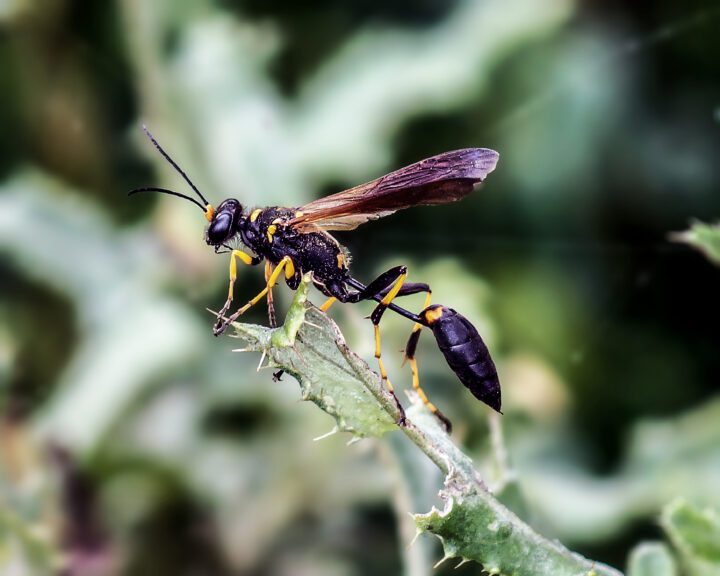Stems of scouring horsetail vary their stiffness by having rings of supportive tissues that react to changes in turgor.
“Plants with hollow axes, e.g. various horsetails and grasses, serve as
generators of biological concepts for technical structures with
variable stiffness. Their structure is characterised by a thin outer
ring of strengthening tissue stabilised by a lining of parenchyma cells
(Fig. 1A-C). The hollow stems are divided into shorter segments
(internodes) by transverse walls and stem thickenings at the so called
nodes. The nodes significantly reduce the danger of local buckling in
these light-weight structures. The stability of these stems depends
significantly on the internal pressure (turgor) of the parenchymatous
cells. If the turgor pressure is reduced, e.g. by water deficiency,
stiffness and stability of the stems decrease. In some species–such as
the Brazilian Giant Horsetail (Equisetum giganteum)…the resistance to
ovalisation is extremely turgor-dependent. In other horsetail
species–such as the Dutch Rush (E. hyemale)–the outer ring of
strengthening tissue is connected via wedge-shaped elements with an
inner ring of strengthening tissue forming a mechanically resistant
sandwich structure (Fig. 1D, E). These stems are also stabilised by the
pressurised lining of parenchymatous cells but depend much less on the
turgor pressure of the parenchyma cells. The mechanical stability
resisting stem ovalisation is diminished by only about 20% due to
reduction of the turgor pressure.
“Potential technical
implementations are manifold, inspired by plants with mechanical
properties of the stem varying with the internal pressure of the
pressurised cellular lining. These include light-weight structures with
chambered pressure-stabilised pneumatic structures that feature a
segmental variation of stiffness and the ability to adapt their
stiffness or form to changing outer conditions, facilitated either
adaptively or via integrated active control. Envisaged technical
applications for these types of biomimetic technical smart materials
include: (1) shells of airplane wings and other aircraft (adaptation to
changing aerodynamics); (2) shells of buildings of innovative
construction; (3) car parts, e.g. aerodynamically adjustable spoilers.”(Speck et al. 2004:199-200)





